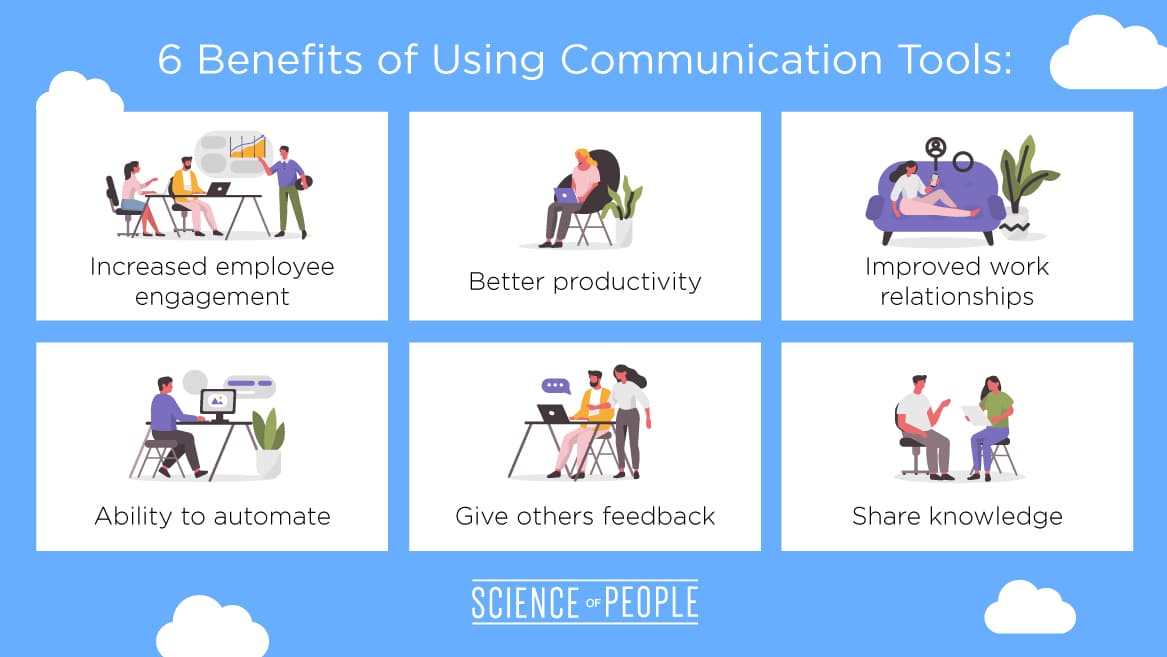Aladingsc Insights
Your go-to source for trending news and informative guides.
Communication Chaos: Finding Your Team's Perfect Tool
Unravel the communication chaos! Discover the ultimate tools to boost your team's productivity and collaboration in one captivating guide.
Navigating the Noise: How to Choose the Right Communication Tool for Your Team
In today's fast-paced work environment, choosing the right communication tool for your team can feel overwhelming due to the multitude of options available. Consider factors such as ease of use, integration capabilities, and the specific needs of your team. Start by conducting a thorough analysis of how your team currently communicates and identifies any gaps. You may find it helpful to create a list of functionalities that are essential, such as real-time messaging, video conferencing, or project management features. This approach not only streamlines the selection process but also ensures that the final choice aligns perfectly with your team’s workflow.
Once you've narrowed the options, involving your team in the decision-making process is crucial. Facilitate discussions or hold demos to evaluate the shortlisted tools. Gathering feedback will help in understanding the preferences of all team members and ensure that everyone feels comfortable with the new system. Ultimately, the right communication tool should enhance collaboration and productivity while minimizing the noise that can result from using inefficient platforms. By being deliberate about your choice, you set your team up for success in a world brimming with communication tools.

Top 5 Essential Features to Look for in Team Communication Tools
Effective communication is the cornerstone of any successful team, and selecting the right team communication tools is crucial. When evaluating these tools, it’s important to focus on features that enhance collaboration, streamline processes, and improve productivity. Here are the top 5 essential features to look for in team communication tools:
- Real-Time Messaging: Instant messaging allows team members to communicate quickly and efficiently, helping to reduce delays in decision-making.
- File Sharing: The ability to easily share documents and files ensures that everyone on the team has access to the latest information and can collaborate without friction.
- Task Management: Integrated task management features help teams assign, track, and prioritize tasks, fostering accountability and keeping projects on track.
- Video Conferencing: Video capabilities facilitate meaningful interactions, especially for remote teams, allowing for face-to-face discussions that text alone cannot deliver.
- Security Features: Data protection is paramount; ensure that the communication tools you choose have strong encryption and compliance measures to safeguard sensitive information.
Is Your Team Experiencing Communication Overload? Here's How to Streamline Conversations
In today's fast-paced work environment, communication overload can become a significant barrier to productivity. Teams are bombarded with messages across various platforms—email, chat applications, and video calls—leading to confusion and frustration. To combat this, it's crucial to identify the sources of excessive communication and understand how it impacts your team's performance. Consider conducting a survey to pinpoint the most used communication tools and the challenges faced by team members. This data can serve as the foundation for creating a more streamlined communication strategy.
Once you’ve assessed the current state of communication within your team, it's time to implement changes that prioritize clarity and efficiency. Start by establishing specific channels for particular types of conversations, such as designating email for formal updates and chat for quick inquiries. Moreover, consider utilizing project management tools to centralize discussions around ongoing tasks. By creating a structured environment where team members know where to go for information, you can significantly reduce the incidence of communication overload and foster a more productive workspace.